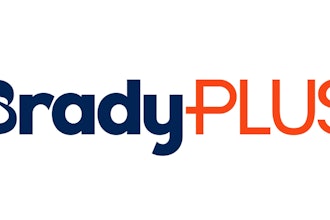UNLOCK YOUR DATA • UNLEASH YOUR SALES
5 BEST PRACTICES FOR
ANALYZING PRICING DATA
eBook
5 BEST PRACTICES FOR ANALYZING PRICING DATA
1
Contents
Executive Overview ........................................................................... 2
A Path Forward ................................................................................ 2
1. Mastering your pricing system of record: ......................................... 3
2. Develop a pricing waterfall: ........................................................... 4
3. Establish market segmentation: ....................................................... 5
4. Make pricing variability your friend: ................................................ 6
5. Facts beat anecdotes: .................................................................... 7
Putting It All Together ......................................................................... 7
5 BEST PRACTICES FOR ANALYZING PRICING DATA
2
EXECUTIVE OVERVIEW: HOW DO YOU
KNOW WHEN YOUR SALES DATA IS
STALE?
You’ve worked for weeks to pull together the perfect presentation in your quarterly
pricing review. You have mined data from a variety of systems and your analysis
is spot-on. Then — the week before your meeting, a key competitor makes a price
move that changes the market dynamics. You quickly realize your analysis has
become irrelevant. The business and the market are in flux. Quite simply, your data
is outdated and so are your recommendations. Now you have to start your analysis
all over.
How do you get accurate, up-to-the-minute pricing information when today’s
business moves so fast? Let’s face it: Using manual techniques to extract data is a
time-consuming process that generally yields insufficient results that can give your
competition the upper hand.
A PATH FORWARD
The good news is that there is a better way. You can overcome these obstacles by
developing a better understanding and integrating data across silos.
Based on work with progressive organizations, PROS has developed five best
practices for analyzing pricing data to improve key performance indicators (KPIs)
and help you meet your goals. Start by mastering your pricing system of record,
then develop a pricing waterfall and establish market segmentation. Now you’re
positioned to use pricing variability to your advantage. All this work will allow you
to move from using anecdotes to a more stable fact-based pricing approach.
Let’s get started by looking at your system of record.
SUMMARY
Using manual techniques
to extract data is a time-
consuming process that
generally yields insufficient
results that can give your
competition the upper hand.
You can overcome these
obstacles by developing a
better understanding and
integrating data across silos.
5 BEST PRACTICES FOR ANALYZING PRICING DATA
3
1 Mastering your pricing system of record: Properly utilizing your company’s data
begins with visibility into the right data to analyze. Most organizations rely on
data from their system of record, commonly an enterprise resource planning
(ERP) system. Many ERP systems serve as a source of order information, while
quoting information is stored in the customer relationship management (CRM)
system.
This separation often creates inconsistencies across data (such as variances in
the spelling of customers’ names, like TEC vs. The Electronics Company), and
there’s commonly a lack of granularity or detail down to the product or customer
level.
Also, when analyzing pricing based on past quotes, queried data may produce
quotes that were proposed but never resulted in orders. These quotes are
dangerous to use for analysis; they can reflect a price agreed to by a customer
who later found a more agreeable price with another seller. Repeating this
process can turn into a vicious cycle of invalid data driving poor decisions.
A more reliable pricing analysis should be
based on successful past orders. This data
generally comprises items actually purchased
from your company. Even this data, however,
isn’t analytics friendly, as it’s usually missing
information about cost exceptions (such
as rebates or reasons for discounts), and
results are often skewed by cost accounting
averages naturally built into most ERP
systems. A profitability analysis, for example,
should include replacement cost data sets based on average costs of materials
instead of the actual costs of replacing materials.
Streamlining the data
integration between your
ERP and CRM systems
helps you remove “bad
data” from your system
and improves future quotes.
And don’t forget to factor in
rebates and discounts when
looking at your pricing
analysis.
5 BEST PRACTICES FOR ANALYZING PRICING DATA
4
2 Develop a pricing waterfall: The pricing waterfall is the most common method
used to measure the value of your pricing efforts. Your ability to model the
operations of your company into a profit-and-loss report — ideally a price
waterfall — is critical to gaining the pricing insight needed for wins.
It’s important to first determine which elements of pricing analysis are most
important to your particular industry and company. An examination of your
organization’s pricing waterfall provides visibility into the elements that went into
calculating the net price that gets in front of the customer and ultimately makes
your organization profitable.
These elements should begin with the list price and then include any adjustments
that occur in the order they are applied. Price adjustments often include segment
discounts or promotional offers, along with incentives such as specific rebates
or early-payment discounts. Ideally, the waterfall should also factor in cost of
goods, cost of sales, allocation for inventory carrying costs and costs associated
with delivering the service to the customer.
In short, there may be a dizzying number of price points and elements to include
in a pricing waterfall, and it’s easy to defeat the purpose of using such a tool
by trying to determine every point that should be considered. Instead, start by
determining and monitoring only five or 10 of the most critical elements that
factor into your pricing. As your organization becomes more accustomed to the
data, introduce more elements into the pricing waterfall equation.
Start by determining and
monitoring only five or 10
of the most critical elements
that factor into your pricing.
As your organization
becomes more accustomed
to the data, introduce more
elements into the pricing
waterfall equation.
5 BEST PRACTICES FOR ANALYZING PRICING DATA
5
3 Establish market segmentation: Once you understand buying behaviors and
purchasing patterns, you’re able to segment your customers more accurately.
To learn more about customer segmentation, download our eBook, 4 Ways
Better Market Segmentation Leads To Higher Sales. The classical view of
market segmentation looks first at the total addressable market, and then
segments according to each specific group. One group of customers may be
focused primarily on cost, while a second group needs more custom products
and is willing to pay more for this value. This method often skews toward large
accounts and ignores the smaller transactions that make up the majority of
sales.
Instead of using classical segmentation, look at how different customers buy
from your organization and what drives those buying behaviors. It’s common
for sales reps to assume that they should treat their best customers with the best
prices. But it’s also possible there are untapped market segments that you need
to offer the best pricing to in order to grow those segments.
Proper segmentation also helps you avoid the blanket mentality that every
customer’s value is the same, which often sacrifices a lot of value. A win of a
product priced at $5 for one client doesn’t mean the same product at the same
price wins with every other client. And how much profit are you leaving on the
table when that same $5 sale is worth $10 to another customer?
Proper segmentation helps
you avoid the blanket
mentality that every
customer’s value is the
same.
5 BEST PRACTICES FOR ANALYZING PRICING DATA
6
4 Make pricing variability your friend: After your market segmentation is
established, review the variability of pricing or profits within each segment to
determine where opportunities exist. The truth is, at first glance, companies are
often stunned by the amount of variability in each segment — the pricing points
for one product may vary from 40 to 180 percent of the market price. But once
you understand what’s behind your customers’ buying decisions, you’re able to
gain some rationality and guidance on how to go to market.
Armed with insight into the variability of your segments, you’ll begin moving
underperformers up to the floor price or higher, so that you’re getting what you
deserve from a market price standpoint. Then you’re ready to start looking at
how to better communicate value, allowing you to increase pricing in the future.
Products you charge $180 for today could bring $185 tomorrow, and those
that bring $2 now could net $2.10 in the future. While these increases may
seem minor, each little incremental increase, when applied across thousands of
products and customers, adds to your bottom line.
Often, when sales reps negotiate the initial deal, $5 or $10 seems irrelevant.
And in most cases, $5 or $10 is irrelevant to customers when prices are
renegotiated. But unless sales reps ask for the increase or hold firm on list
pricing, they’re not going to get it. By examining the variability in your
segments, you gain a better understanding of where and when price negotiation
is appropriate. This is how variability is your friend in the discussion.
An added value of looking at pricing variability is that you gain insight into your
customer base, allowing you to see areas of potential growth, while exposing
the true profitability of high-volume clients.
By examining the variability
in your segments, you gain
a better understanding
of where to be when
renegotiating pricing — this
is how variability
is your friend in the
discussion.
5 BEST PRACTICES FOR ANALYZING PRICING DATA
7
5 Facts beat anecdotes: When making the case for deals with an in-house analyst,
many sales reps use anecdotes from the field to demonstrate how they closed
a deal at a particular price point. There are dozens of reasons why sales reps
argue for special pricing — maybe it’s a loyal customer, perhaps the customer is
in an especially depressed economic area or maybe it’s a new market segment
the company is entering. But when pricing analysts look at the facts, the data
often tells a different story.
It’s impossible for pricing analysts to plan for every variation of a discussion; the
key is to be equipped with solid data about the market and past pricing. Pricing
software delivers information in real time, providing ready access to the insight
and expertise needed to make a pricing determination. That way, when a
customer makes the case that depressed economic conditions dictate a discount,
your sales reps are going to have data that shows whether sales in the area
support your proposed pricing.
PULLING IT ALL TOGETHER
A data-driven approach to pricing is increasingly becoming a requirement if you
want to remain competitive. When implemented properly, data is transformed into
better information to more effectively price products.
If your organization doesn’t already have a handle
on these five best practices, pricing software is
a great catalyst for jumpstarting the discussion.
Pricing software does the heavy lifting for your
organization. That means no more sitting down and
trying to manually figure out pricing or to build a
case using bits of data unearthed from the silos of
information.
The software integrates with one or multiple systems
(ERP, CRM and other business operations systems) and takes in all data available,
whether it’s information about customers, products or transactions. Since it works on
a highly granular level, the software is able to make sense of the data and deliver
relevant and useful information.
Empower your sales reps
with facts and they won’t
have to rely on anecdotes
and best guesses when they
work on their next deal.
5 BEST PRACTICES FOR ANALYZING PRICING DATA
8
It also helps sales organizations by allowing them to comb through all the data
and provide relevant insight by targeting anomalous patterns and attributes. With
a better understanding of these anomalies, you’re ready to begin optimizing your
pricing.
Optimization starts with the ability to slice and dice information while drilling down
into segment-specific data. The software allows you to segment your customers by
factors such as buying patterns, what offers are winning and what pricing structures
make the most sense. The result is a more responsive system that fosters more
accurate pricing strategies.
This responsiveness means you’re better prepared for today’s marketplace, where
competitors change prices more frequently, consumers are better informed and new
products enter the market faster than ever. If you’re taking months using manual
tools to pull data to perform pricing analysis, the market has already moved past
you by the time you come up with a recommendation. Using software that provides
visibility into both the variability and the volatility of the market helps you to remain
competitive.
Done right, real-time pricing software adds sustainability to your organization,
helping drive continuous improvement in pricing. The software gives you competitive
intelligence by providing insight and continually updated information as business
and market conditions change.
That means the next time you show up at a meeting with pricing information you
don’t have to worry whether it’s already outdated. You’ll be confident knowing
that you’re presenting real-time data that accurately reflects the current state of the
market.
Learn how PROS Step helps executives understand what factors contribute most to
your company’s profitability.
THINK OTHERS MAY BE
INTERESTED? SHARE THIS
EBOOK:
SUMMARY
Pricing data analysis should
help you be better prepared
for today’s marketplace,
where competitors change
prices more frequently,
consumers are better
informed and new products
enter the market faster than
ever.
5 BEST PRACTICES FOR ANALYZING PRICING DATA
9
About PROS
PROS Holdings, Inc. (NYSE: PRO) is a big data software company that helps
customers outperform in their markets by using big data to sell more effectively.
We apply 27 years of data science experience to unlock buying patterns and
preferences within transaction data to reveal which opportunities are most likely
to close, which offers are most likely to sell and which prices are most likely to
win. PROS offers big data solutions to optimize sales, pricing, quoting, rebates
and revenue management across more than 30 industries. PROS has implemented
more than 600 solutions in more than 55 countries. The PROS team comprises
more than 700 people around the world.
To learn more, visit pros.com.
Copyright © 2014, PROS Inc. All rights reserved. This document is provided for information purposes only and the contents hereof are subject to change without notice. This document
is not warranted to be error -free, nor subject to any other warranties or conditions, whether expressed orally or implied in law, including implied warranties and conditions of
merchantability or fitness for a particular purpose. We specifically disclaim any liability with respect to this document and no contractual obligations are formed either directly or indirectly
by this document. This document may not be reproduced or transmitted in any form or by any means, electronic or mechanical, for any purpose, without our prior written permission.
5 Best Practices for Analyzing Pricing Data
You’ve worked for weeks to pull together the perfect presentation in your quarterly pricing review. You have mined data from a variety of systems and your analysis is spot-on. Then — the week before your meeting, a key competitor makes a price move that changes the market dynamics.
Latest in Home
Tool Maker Vaughan to Shutter Longtime Factory
April 15, 2024
Do it Best, United Hardware Merger Approved
April 12, 2024






















